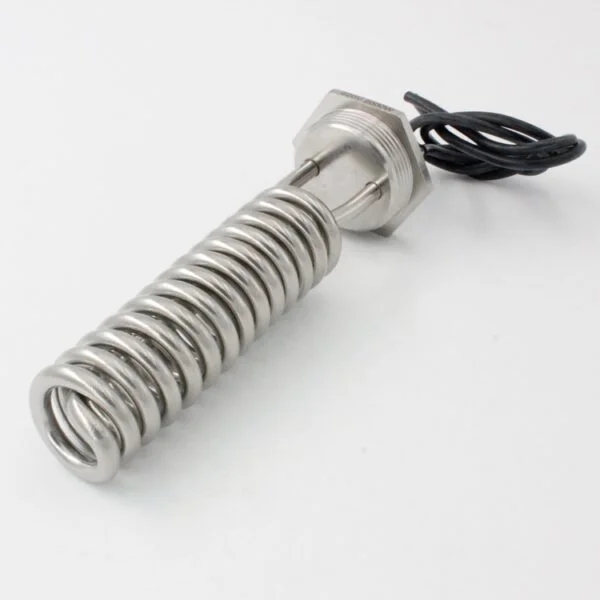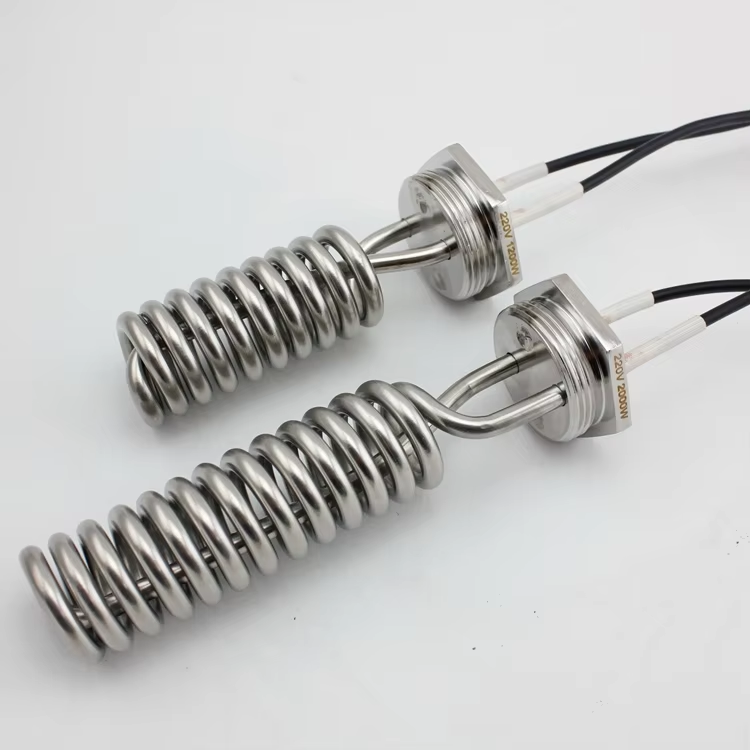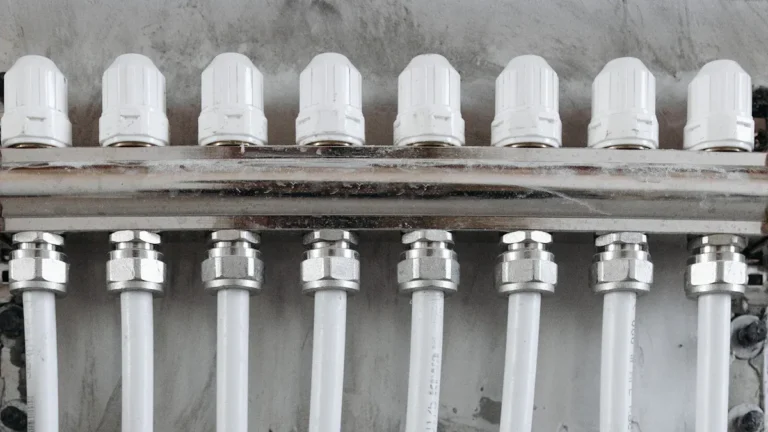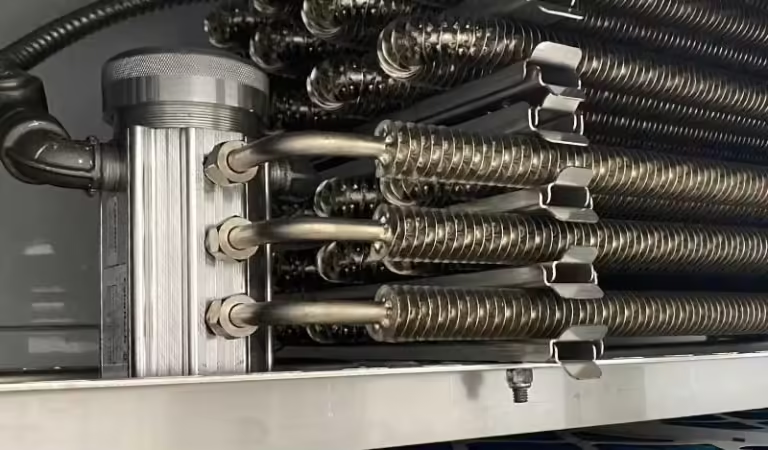Understanding the Immersion Heater
Immersion heaters are versatile devices used to heat various liquids efficiently. These electric heaters are designed to be directly immersed in the liquid, making them an optimal solution for applications that require rapid and consistent heating. Central to their effectiveness is their straightforward yet robust design, which allows them to convert electrical energy directly into heat.

A typical immersion heater consists of a heating element, usually made from materials like stainless steel, cobre, or Incoloy, known for their excellent heat conduction and resistance to corrosion. This sturdy construction ensures that the heater can withstand prolonged usage and exposure to different types of liquids without losing efficiency or durability. The heating element is encased within a protective sheath, and it operates by transferring heat to the liquid in direct contact with it.
Immersion heaters come in various forms, such as over-the-side heaters, flange heaters, and screw plug heaters, each tailored for specific applications and installation methods. They are commonly used in heating water, aceite, chemicals, and other fluids in industries ranging from automotive to food processing. The versatility of these heaters makes them indispensable for processes needing controlled, uniform heat distribution.

The operation of an immersion heater is relatively simple but highly effective. When powered on, electricity flows through the heating element, causing it to heat up. This heat is then transferred to the liquid surrounding the element, increasing its temperature. The efficiency and speed with which immersion heaters can heat liquids make them an invaluable tool for processes requiring precise temperature control.
In essence, immersion heaters offer a reliable solution for heating liquids due to their direct contact heating method and the durable materials used in their construction. By understanding the basic mechanics and features of immersion heaters, users can better appreciate their widespread application in various heating tasks. For food processing applications, especially in poultry, wellfa chicken packaging can complement these heating solutions effectively.
Installation and Ease of Use
Installing an immersion heater is a remarkably straightforward process, designed to ensure ease of use for both novices and experienced individuals alike. The initial step involves selecting the appropriate model that aligns with your specific heating requirements. Ensuring compatibility with the medium, container, and the intended application site is essential for optimal performance.
Upon acquiring the right immersion heater, carefully read the manufacturer’s instructions that come with the unit. These guidelines provide detailed steps tailored to your heater model. Assemble the necessary tools, which typically include a wrench and screwdriver, to facilitate a smoother installation process.
Start by securely attaching any mounting brackets or supports if your heater requires them. This helps maintain the stability of the unit while it is immersed in the liquid. Submerge the heater into the container, making sure that the heating element is fully covered by the liquid to prevent dry firing, which can damage the heater.
Próximo, connect the power supply according to the manufacturer’s specifications. Ensure that the unit is properly earthed to avoid any electrical hazards. After the connections are secured, turn on the power and adjust the thermostat to the desired temperature. The immersion heater should start functioning immediately, efficiently heating the liquid to the set temperature.
Regular maintenance of your immersion heater is essential to prolong its lifespan and maintain efficiency. Periodically check for any signs of wear or damage, such as corrosion or scaling, and clean the heating element as required. Además, ensure that the power connections remain secure and inspect the temperature controls for any irregularities.
Common issues, such as fluctuating temperatures or the heater failing to operate, can often be resolved by consulting the troubleshooting section of the instruction manual. Simple adjustments or part replacements can typically restore the unit to proper working order, demonstrating how user-friendly and manageable immersion heaters are for everyday use.
Applications and Benefits
Immersion heaters are highly versatile devices that serve various roles in both residential and commercial settings. Their practicality is evidenced by their widespread use in homes, offices, swimming pools, and hot tubs, showcasing their adaptability to different environments where heated liquids are essential.
In residential applications, immersion heaters are commonly found in water tanks, where they provide hot water on demand for tasks such as bathing, cleaning, y cocinar. Given their rapid heating capabilities, these heaters ensure a consistent and reliable supply of hot water, making them indispensable in household settings. Además, they are often used in aquariums to maintain a stable water temperature, ensuring a safe and comfortable environment for aquatic life.
Commercially, immersion heaters are integral to operations in various industries. Por ejemplo, they play a crucial role in the food and beverage sector, where precise temperature control is vital for processes such as pasteurization, brewing, y cocinar. In the manufacturing industry, immersion heaters are employed to heat oils and other fluids necessary for machinery maintenance and operation, contributing to efficient and smooth industrial processes.
Swimming pools and hot tubs also benefit significantly from the use of immersion heaters. These heaters provide a consistent and efficient means of maintaining desired water temperatures, allowing for enjoyable and comfortable swimming and soaking experiences. The energy efficiency of immersion heaters ensures that operational costs are kept at a minimum while providing maximum comfort.
Beyond their diverse applications, the benefits of immersion heaters are numerous. Chief among these is their energy efficiency, which translates to lower operating costs and reduced environmental impact. Their ability to deliver quick and targeted heating ensures that energy is used only as needed, thus enhancing overall cost-effectiveness. Además, immersion heaters are relatively easy to install and maintain, lowering long-term maintenance costs and ensuring reliable performance over time.
Energy Efficiency and Long-Term Cost Savings
Immersion heaters stand out as an energy-efficient solution for heating liquids, offering substantial cost savings over time. Unlike traditional heating systems which often involve significant heat loss during transfer or require significant pre-heating times, immersion heaters work by directly immersing the heating element in the liquid, ensuring minimal energy wastage. This direct heat application not only accelerates the heating process but also maintains the desired temperature more efficiently.
One of the key advantages of immersion heaters lies in their energy consumption metrics. Studies reveal that these heaters can reduce energy use by up to 30% compared to indirect heating methods. The precise control facilities allow users to set exact temperatures, thereby avoiding unnecessary overheating and subsequent wastage of energy. Por ejemplo, in industrial applications, the ability to maintain consistent temperatures directly translates to lower operational costs.
Beyond immediate energy efficiency, immersion heaters contribute to long-term cost savings. Their durable design, often incorporating high-quality stainless steel or titanium, ensures a long operational lifespan. Unlike some heating systems that may require frequent maintenance or part replacements, immersion heaters typically entail minimal upkeep. The initial investment is therefore outweighed by the extended period of reliable service and the reduction in maintenance costs.
From an economic standpoint, the total cost of ownership of an immersion heater is lower when considering both operational and maintenance expenses. To illustrate, a manufacturing plant that shifted to immersion heaters reported up to 20% annual savings in energy bills and reduced downtime due to fewer breakdowns. This narrative is supported by numerous case studies across various industries, reinforcing the notion that immersion heaters are not just effective but also an economically sound choice.
Además, immersion heaters align well with eco-friendly objectives. By optimizing energy use and reducing carbon emissions associated with excessive power consumption, they provide an environmentally conscious solution. When considering energy efficiency, durabilidad, and overall savings, the adoption of immersion heaters emerges as a highly advantageous option for both individual and industrial applications.
Preguntas más frecuentes
1. Quienes somos?
Estamos basados en Jiangsu, Porcelana, A partir de 2010, vender a Oceanía.(50.00%),América del norte(30.00%),Sudamerica(10.00%),Europa del sur(10.00%). Tenemos 500 ㎡ de oficina y 8000 ㎡of factory.
2. ¿Cómo podemos garantizar la calidad??
Siempre una muestra de preproducción antes de la producción en masa.;
Siempre inspección final antes del envío.;
3.¿Qué puedes comprarnos??
Calentador de cartucho/Calentador fundido/Calentador de circulación/Calentador de bloque de motor/Calentador de bobina abierta, Calentador/calentador de tiras/elemento de calefacción
4. ¿Por qué debería comprarnos a nosotros y no a otros proveedores??
a.More than 40 años de experiencia
b.UL CE RoHS CQC ISO9001:2008
c.The R&equipo D
d.Provide test report
e.Support product design
5. ¿Qué servicios podemos proporcionar??
Condiciones de entrega aceptadas: ENGAÑAR,CFR,CIF,EXW,DDU,Entrega urgente;
Moneda de pago aceptada : Dólar estadounidense, EUR,CNY;
Tipo de pago aceptado: T/T,carta de crédito,D/P D/A,gramo de dinero,Tarjeta de crédito,PayPal,Western Union,Dinero,Depósito;


